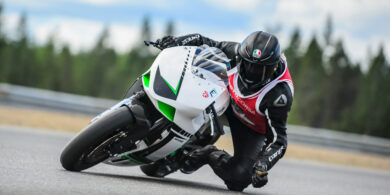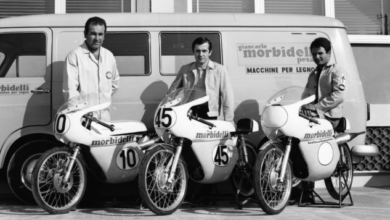OEMs say they’re holding their own in youth quad sales – December 4, 2006
Despite the 3.1 percent overall decrease in demand for ATVs from major manufacturers, OEMs report they are holding their own in the youth ATV category.
Because importers of ATVs manufactured mainly in China and Taiwan do not report sales figures to the Motorcycle Industry Council, which monitors ATV sales, getting a picture of the entire market — much less the youth segment alone — can be troublesome. According to the Consumer Product Safety Commission, imports comprised 10 percent of the overall market in 2004, or about 94,000 units. Smaller numbers of ATVs are imported to the United States from Europe and Southeast Asia. Although there are no figures to back these claims up, some mainline manufacturers believe imported products could make up half of the market.
Imported models have been flooding the marketplace in recent years at prices that are 50 percent to 75 percent cheaper than models produced for powersports dealers. During a trip to the local auto parts store or mass merchant, one often sees adult and youth ATVs being sold beside motor oil and spark plugs, which OEMs feel cheapens the industry both literally and figuratively.
“What concerns me is a lot of these (imported) vehicles don’t comply with CPSC guidelines,” says Gary Laskin, product manager for ATVs at Polaris Industries, Medina, Minn. “Not only can riders get hurt on these machines, but if they have a bad experience, they may not come back. What’s being sold on the low end is basically a disposable product. I’ve seen with my own eyes ATVs being sold out of the back of a tractor-trailer at the Minnesota State Fair.”
Despite the increased competition from imports, domestic manufacturers refuse to cheapen their products, relying instead on their reputations for quality products and innovation to help drive sales.
Glenn Hansen, communications manager at American Suzuki, said the overall youth ATV market among major manufacturers is flat. However, Hansen reports that youth sales at the Brea, Calif.-based company are up 10 percent year-to-date over 2005. The company has upgraded its product lineup in the past two years with the
LT-Z50 and LT-Z90, both of which have four-stroke motors and a fresh look that mimics adult models. The company produces its youth ATVs in Taiwan at a plant partly owned by Suzuki Manufacturing Corp.
Suzuki hadn’t tried to compete against imports until it saw some of its dealers carrying imported products alongside the company’s own youth models, which definitely was a wake-up call. “Honestly, we hadn’t targeted (importers) … because we didn’t know who to target,” Hansen says.
According to CPSC data based on Internet searches, youth ATVs from importers can be found at prices from $320 to $950, with an average price of $630. That’s considerably less than products from mainline producers that can cost nearly $2,500 for a 90cc youth ATV. While price certainly is an important consideration for many consumers, quality products backed up by aftermarket support add value and safety that importers can’t touch, points made by Suzuki’s new in-store posters and point-of-sale materials.
“We’re putting a message out there about the long-running heritage of performance, value and reliability of Suzuki products,” Hansen says. “You can trust a Suzuki ATV” more than one from a manufacturer you don’t know.
Arctic Cat is holding its own in the youth ATV market, with sales this year running at about the same pace as last year, said John Tranby, marketing and communications manager at the Thief River Falls, Minn.-based manufacturer. The company has found success with youth models that mimic adult ATVs.
“Our (youth) models are exact replicas of the models that moms and dads ride,” Tranby says. “Arctic Cat riders are more apt to buy the same brand because they have that relationship with the dealer.”
Tranby worries not that youth riders will have a bad experience on imported units, but that kids will be hurt on inferior ATVs, tarnishing an industry that’s worked hard over the past two decades to promote safety.
Like Suzuki, Polaris has been tweaking its product lineup to maintain its position as a leader in youth ATVs, says Laskin. Youth models all feature four-stroke powertrains and new chassis, including a pink chassis that’s proving popular among female riders. “At Polaris, one-third of the market is girls, and we’ve seen some exciting results,” Laskin says. “The response from dealers and customers has been very positive. It’s clear from talking to them that women participating in a male-dominated sport are looking for options that appeal to them.”
Polaris has been making its youth ATVs in Taiwan for the past five years, working closely with the manufacturer and sending engineers over to monitor production lines. Laskin says imported ATVs vary widely in quality, but it won’t be long before import competition on a quality level increases. “There are literally dozens of Chinese companies out there, and while they all won’t be around, a few will figure it out, and they need to be taken seriously.”
Domestic manufacturers hope that what happened in France will repeat in the United States. Laskin says France was inundated with imports that wrested market share from mainline suppliers, but quality concerns turned dealers and consumers away from imports.
“We have to find a way to differentiate our products to add value that the customer perceives,” Laskin says. “We have to offer more than those guys are offering.” psb




